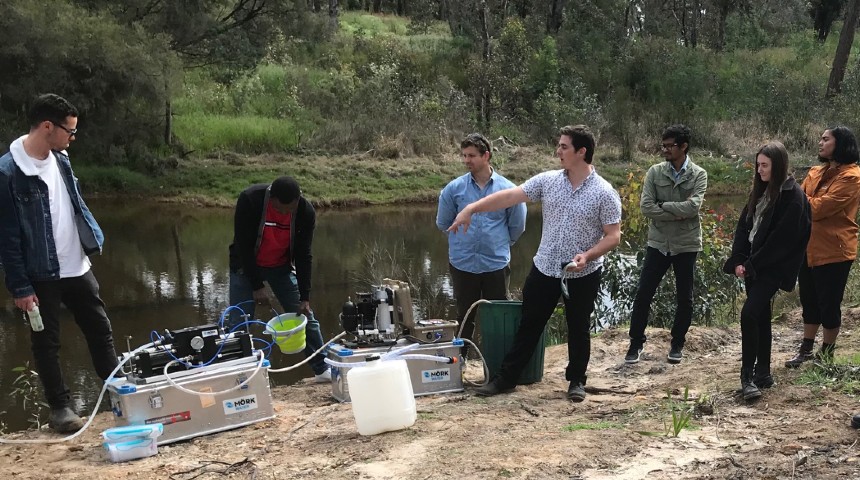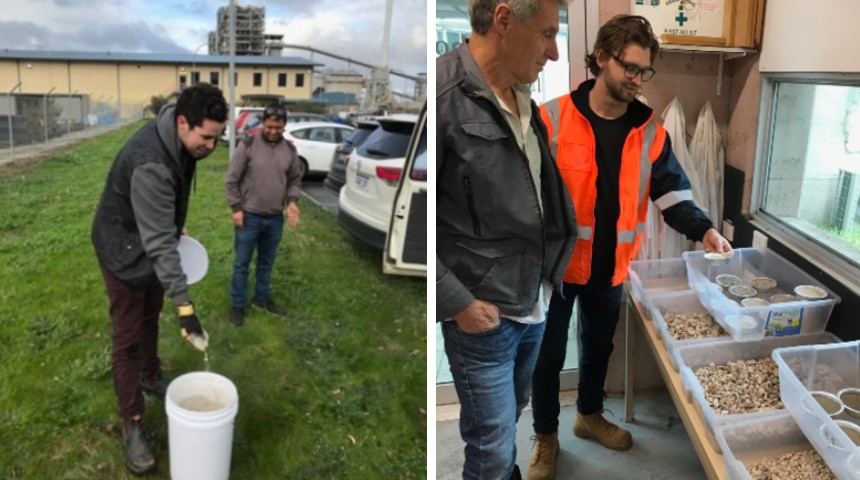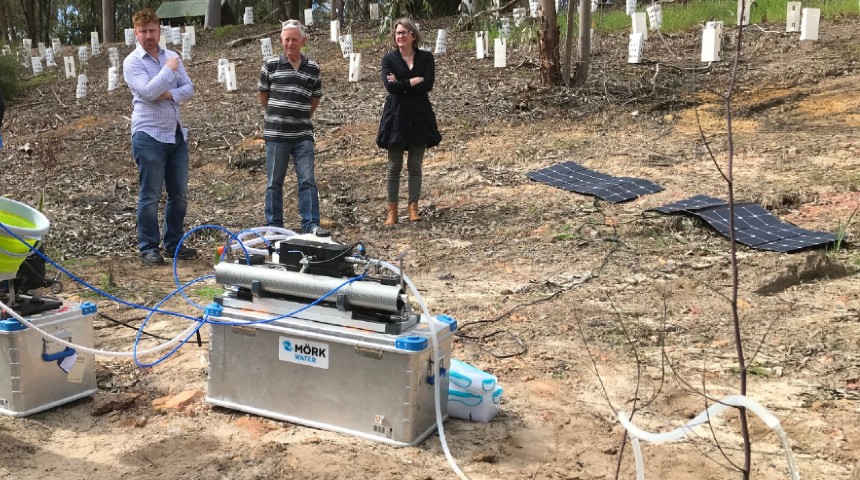
From low-carbon concrete to affordable ‘tiny houses’, environmental engineering students from Murdoch University are exploring new technologies and potentially growing new industries in the process.
Environmental engineering students from Murdoch University are responding to the economic crisis brought on by COVID-19 by working on technological innovations that could underpin new industries and future businesses.The four technologies in development include low carbon eco-concrete, affordable timber ‘tiny-houses’, solar-powered water treatment and greywater recycling.
Nurtured by Murdoch University’s innovation and business start-up program, Launchpad, the students’ projects have the capacity to form new pathways to economic development and job creation in Western Australia.
A new eco-approach to concrete
One group of students is developing an entirely new approach to concrete by making geopolymer cement in a unique chemical reaction and then adding recycled aggregates.The process creates a product that reduces carbon emissions by 80 per cent compared to normal Portland Grey Cement, reduces costs by 20 per cent and increases strength by 20 per cent.

Image: Students collect flyash from the Bluewater Power Station in Collie to make geopolymer cement and prepare different grades of recycled aggregate ready for mixing into eco-concrete.
The students have been visiting Collie and developing strong relationships with civic leaders connected to coal mines and power stations, where vast quantities of waste flyash is produced from burning coal. This is the raw material for the unique geopolymer cement.
It means that as these power stations start to shut down in the energy transition and jobs are lost, a new industry producing this eco-concrete can be created.
Affordable and sustainable housing design
For many millennials, breaking into the housing market often feels like an unachievable step.But there’s new hope thanks to a range of housing models coming onto the market. These new homes are entirely different to Perth’s once dominant single detached house. And they set a much higher standard for environmental performance.
Murdoch students are developing a “tiny house passivhaus” model. Following in Germany’s footsteps, the tiny houses will have a high environmental performance and low carbon footprint, achieved using advanced timber materials.
The students have been researching leading examples of similar constructions underway around Perth and Bunbury and discussing their ideas with an advanced timber manufacturer near Collie.
Dr David Goodfield, solar house expert and tutor to the students, said the goal is to develop an entirely new approach to affordability and sustainability in housing.
“A key element to the students’ approach is to design the house to make use of free energy from the sun. Even this one simple technique, so under-utilised in Perth, will reduce winter heating bills enormously,” Dr Goodfield said.
Small scale desalination plants
Another group of students is developing a new approach to water supply, focusing on the increasingly saline rivers and brackish groundwater in the southern wheatbelt region.These students are combining solar power with new lower-cost, high-efficiency reverse osmosis membranes and advanced monitoring techniques. The system is being deployed in multiple plants across the region from a possible new workshop in Collie, to develop a new delivery and maintenance model across the region. This could spawn a new industry and job creation scheme for Collie as a transition town.

Image: The portable solar-powered water desalination kit that the Murdoch students use for demonstration and learning was acquired from industry partner Moerk Water.
Dr Vishnu Ravisankar, Murdoch University desalination expert, said the students’ work was an important step in exploring the possibilities of small-scale desalination.
"While the larger support structures of agencies like Water Corporation will continue, with our drying climate there will be an increasing role for small-scale desalination plants, at least on an intermittent basis. The students’ work will explore one possible avenue.”
Greywater – an untapped resource
In the drying climate, Perth’s parched summer suburbs are screaming out for more irrigation to enable urban greening and vegetation cover to help create cooler micro-climates.One group of students is focused on an untapped resource – greywater. They hope to use greywater as an unrestricted source of irrigation through an entirely innovative approach.
They are looking into ways to insert advanced sensors into a new diversion device to enable extraction of less contaminated greywater from sewers for home and broader urban irrigation systems.
The students have been closely watching other Murdoch engineering graduates employed in the Shire of East Pilbara as they complete a five-house retrofit trial for greywater irrigation.
They will apply these learnings to a new development estate in Hamilton Hill in the hope of devising an urban-scale greywater solution. If this challenge can be tackled successfully, the next goal is to develop an approach to whole town retrofit and a new water industry development in Collie.
Dr Stewart Dallas, adjunct and industry advisor to Murdoch students from the Greywater and Wastewater Industry Group said greywater was a largely untapped resource in the drying climate of southwest WA.
“These students are innovating a potentially revolutionary technology that could enable essentially free irrigation in summer,” he said.
“This in turn can reduce scheme water consumption by up to 30 per cent.”